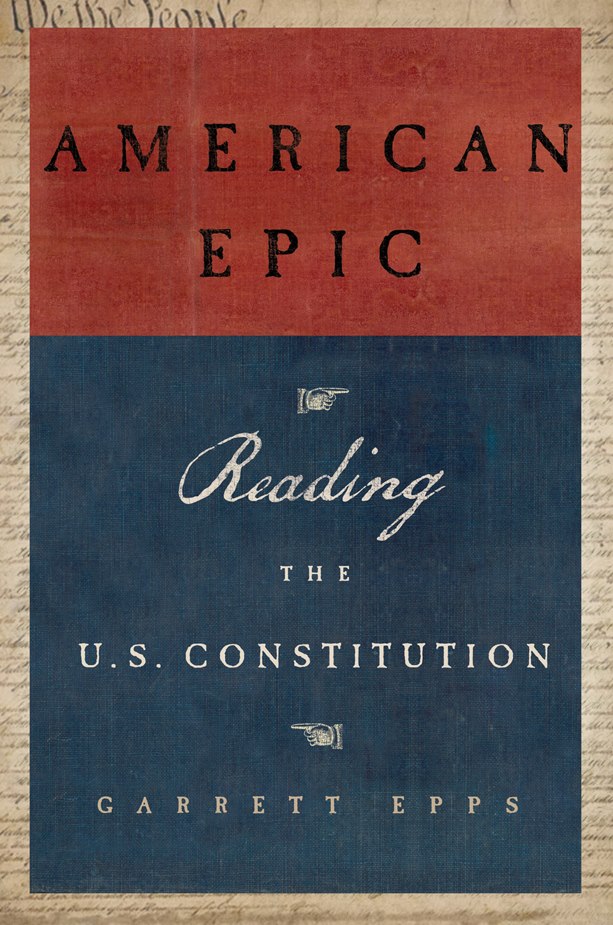My good friend Garrett Epps has a fascinating new book coming out from Oxford titled “American Epic: Reading the U.S. Constitution.” Though I haven’t read the book yet, I have seen the cover. And because the cover has a Constitution on it, I bring you the next installment in my series on “Constitutional Covers.” See my previous posts about the covers of ConLaw books by Barnett, Balkin, Chemerinsky, and Grieve.
Without further ado, here is Garrett’s constitutional cover.
While at a quick glance, this may seem to be an innocuous cover, you need to probe deeper, and never forget the wily mind on Garrett’s shoulders.
First, pay close attention to the hands. Like any master illusionist, always watch the hands. The hand over the word reading is pointing to the right. This signifies that conservatives (those on the right at least), prefer textualism through reading, rather than divining purposes. Yet, this right-pointing hand is facing away from the key element of the Constitution–“We the People.” Being bound by the dead hand (pun intended) of the past is entirely anti-democratic, and inconsistent with our free republic.
In contrast, the hand under the word “U.S. Constitution” is pointing to the left, towards “We the People,” symbolizing a progressive vision of the Constitution. This progress (may I even call it “epic” progress) must continue, even if it is conflicts with the text. Though, paradoxically, the liberal direction is going backwards (though forward if you are reading Hebrew–that goes from right to left).
My biggest concern is the fact that the cover design is inherently self-contradictory–perhaps intentionally so. The Constitution, which is what I would view as the original “American Epic,” is obscured by the overlay of Garrett’s new “American Epic.” Only one epic can prevail.
For some reason, many covers of con law books tend to do stuff with the Constitution. Both Barnett and Chemerinsky’s book cut stuff out of the Constitution. Epps joins the Constitution in 2020 with simply covering the Constitution up. Akhil Amar’s new book lacked a picture of the Constitution on the cover–in addition to being Unwritten, the Constitution may also be invisible. Though, Larry Tribe’s “The Invisible Constitution” simply has a faded text of the Constitution in the background.
For the next ConLaw book, I would recommend perhaps shaping the Constitution into origami–maybe into a tri-corner hat. That would be very Tea Party appropriate.
I can’t wait to design the cover of my next book (let’s see if the Publisher likes my earlier sketches).
